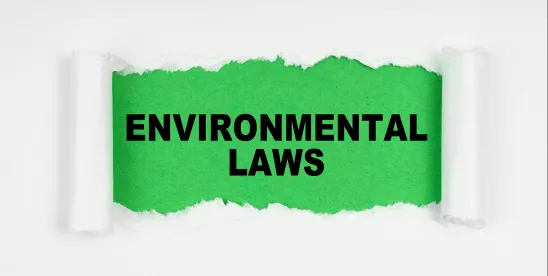In the wake of President Trump’s Unleashing American Energy Executive Order 14154 and the Council on Environmental Quality’s (“CEQ”) subsequent rescission of the government-wide National Environmental Policy Act (“NEPA”) regulations, federal agencies were given a year to revise their NEPA procedures. Last week, many departments and agencies acted early, issuing a barrage of interim final rules and new or revised NEPA guidance documents. Although this new NEPA landscape provides some potential efficiency benefits, it also creates unpredictability and the potential for inconsistent NEPA implementation across agencies.
Additionally, reflecting the broader push for more efficient NEPA reviews, the One Big Beautiful Bill Act will allow applicants to pay a fee for an expedited NEPA review process.
Key Regulatory and Policy Changes Across Agencies
1. From Regulations to Guidance—at a Cost to Certainty
Many departments and agencies are withdrawing regulations in favor of guidance documents. While this shift is intended to provide flexibility and responsiveness, it introduces substantial uncertainty for project proponents. Guidance can be changed quickly, raising the risk of mid-review shifts in agency direction or procedures. Subsequent administrations with different priorities will find it easier to shift course.
2. Fragmentation Across Agencies
The uniformity once provided by CEQ’s government-wide NEPA regulations has eroded. Divergent agency approaches to NEPA implementation pose a particular risk to projects requiring federal authorizations from multiple federal agencies, like electric transmission lines and large energy generation projects. A lack of consistency across departments and agencies potentially increases the administrative burden and legal risk for these projects.
3. Narrower NEPA Applicability
Agencies are narrowing the scope of actions subject to NEPA by emphasizing that both a “major” and “federal” action must be present, in line with the 2023 amendments to the NEPA statute. Some agencies also identify specific project types and authorizations as exempt from NEPA review in their new NEPA policies.
4. Substantially Narrowed Scope of Analysis
The 2023 NEPA statutory amendments and the Supreme Court’s decision in Seven County Infrastructure Coalition v. Eagle County have led to:
- a focus on “reasonably foreseeable impacts of the proposed action” replacing the concepts of direct, indirect, and cumulative impacts;
- elimination of cumulative impacts as a distinct category; and
- a narrower definition of connected actions.
5. Focus on Categorical Exclusions
New guidance for many departments and agencies emphasizes the use of Categorical Exclusions (CatExs) as a means of avoiding full-blown NEPA analyses. This includes expedited processes for creating new CatExs and adopting or using other agency CatExs, consistent with NEPA Section 109.
6. Streamlining Measures
Many agencies are implementing measures to streamline NEPA analyses and meet statutory deadlines (two years for Environmental Impact Statements (“EISs”), one year for Environmental Assessments (“EAs”)) and page limits (150–300 pages for EISs, 75 for EAs). These include:
- reliance on existing documents from other federal, state, local, or tribal entities;
- restrictions on the content of appendices to prevent circumvention of page limits; and
- a redefinition of “programmatic” documents to cover sequences of related actions
7. Reduced Public and Tribal Engagement
Significantly, public involvement has been curtailed. While public comment for Notices of Intent for EISs remain, scoping and public comment on draft environmental documents vary by agency and are largely discretionary. Additionally, some departments and agencies appear to be scaling back commitments to Tribal coordination and consultation, despite ongoing obligations under Executive Order 13175 and agency-specific policies.
One Big Beautiful Bill Act—Fee for Expedited NEPA Review
The One Big Beautiful Bill Act amended NEPA by creating Section 112 which offers an even more expedited review process for applicants willing to pay a fee. Applicants can pay 125% of the estimated cost of preparing a NEPA EA or EIS to accelerate NEPA timelines—180 days for EAs and 1-year for EISs. Notably, this provision does not streamline other federal authorization processes outside of NEPA, such as under the National Historic Preservation Act or Endangered Species Act.
Implications
The long-term implications of these changes remain uncertain. Courts may struggle to reconcile these agency and department streamlined procedures with NEPA’s “hard look” and “rule of reason” standards. However, Seven County directs courts to afford substantial deference to agency determinations regarding the type and level of environmental review. Stakeholder groups can be expected to take issue with new limitations on public notice and comment opportunities.
The transition from regulations to non-binding guidance will make NEPA implementation more flexible—but also less predictable. The new agency-specific approach post-CEQ regulations is poised to create inconsistent NEPA implementation across agencies and departments, raising particular challenges for projects and activities that involve multiple federal agencies.
Further, the new statutory fee for expedited NEPA review provision offers promise as a tool for streamlining NEPA reviews. Nevertheless, it fails to address broader federal permitting challenges, and critical implementation details remain undefined.
Given this evolving regulatory landscape, project sponsors should anticipate continued changes and maintain close oversight of NEPA policy developments.
Additional Resources: Public Comment Periods on Agency NEPA Changes
Army Corps of Engineers
Procedures for Implementing NEPA; Removal
Comment Date: August 4, 2025
Department of Energy
Revision of National Environmental Policy Act Implementing Procedures
Comment Date: August 4, 2025
Department of the Interior
National Environmental Policy Act Implementing Regulations
Comment Date: August 4, 2025
Department of Transportation
Procedures for Considering Environmental Impacts
Comment Date: August 4, 2025
Federal Aviation Administration
Rescission of FAA Order 1050.1F, Availability of FAA Order 1050.1G, Request for Comments
Comment Date: August 4, 2025
Federal Energy Regulatory Commission
Removal of References to the Council on Environmental Quality's Rescinded Regulations
No comment date
Federal Highway Administration, Federal Railroad Administration, and Federal Transit Administration
Revision of National Environmental Policy Act Regulations
Comment Date: August 4, 2025
National Highway Traffic Safety Administration
Recission of 1975 Procedures for Considering Environmental Impacts
Comment Date: August 4, 2025
U.S. Army
Environmental Analysis of Army Actions
Comment Date: August 4, 2025







 />i
/>i

